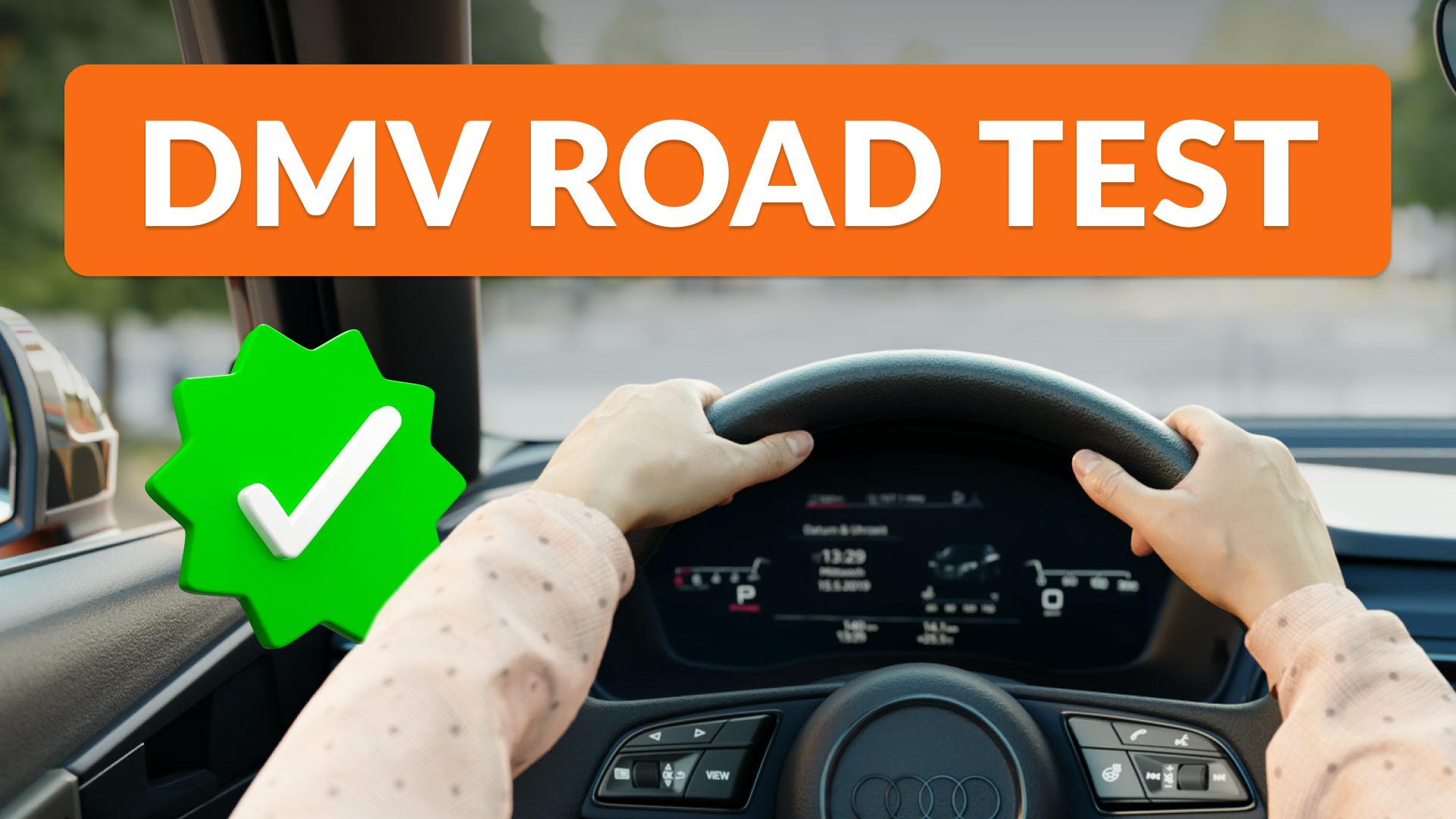
DMV Road Test: The Ultimate Guide
This road test guide covers the following:
- Requirements and Documentation: What you need to bring and have in order.
- Tested Skills: A detailed list of the driving skills you’ll be evaluated on.
- Test Day Expectations: An overview of what happens during the road test.
- Test Results and Next Steps: How to understand your results and the next steps.
What is the DMV Road Test?
The DMV road test is the final examination step before you can get your driver’s license. It examines your ability to safely operate your car under the driving laws of your state.
Road Test Requirements
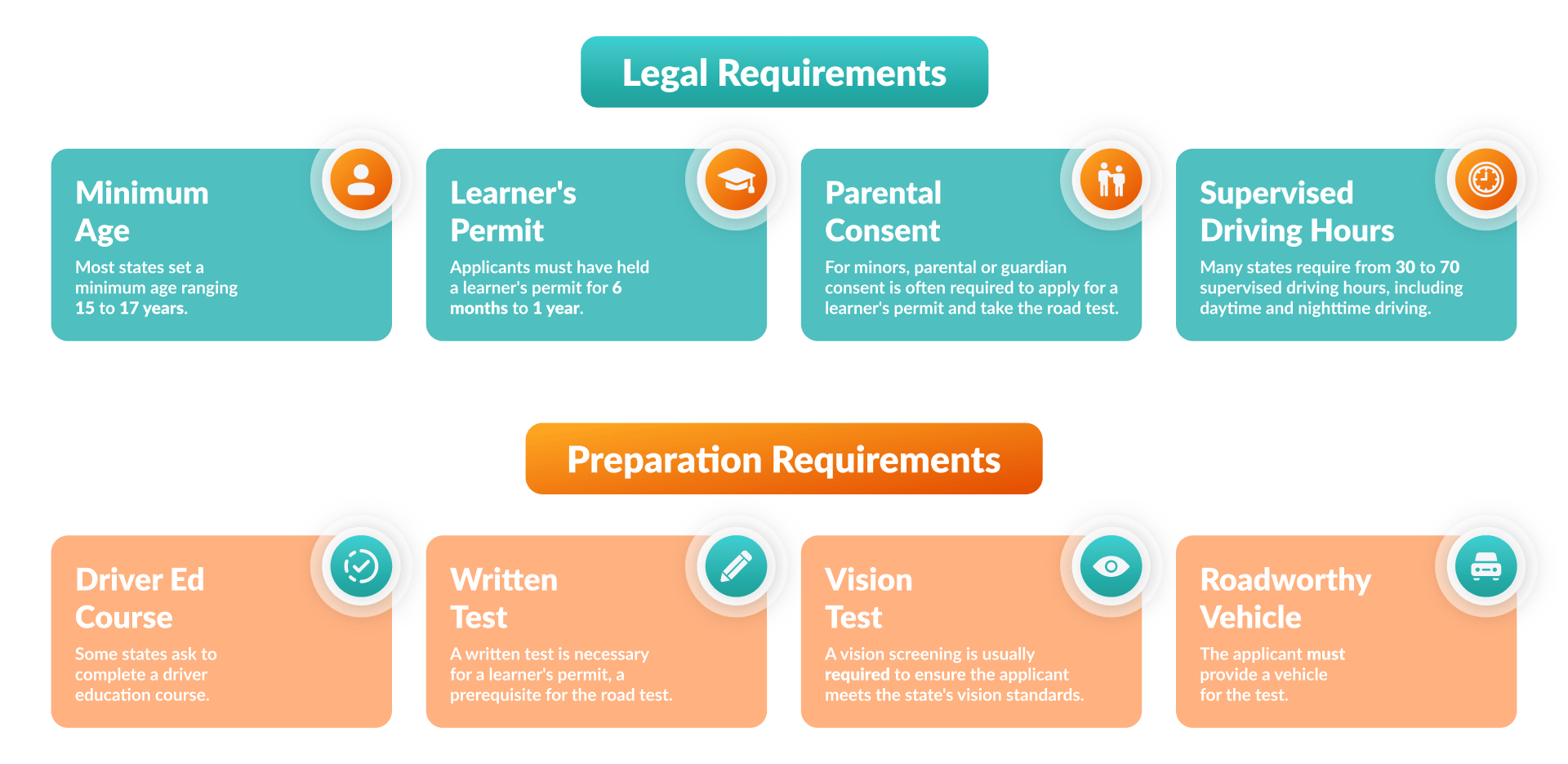
Legal Requirements
- Minimum Age: Most states set a minimum age ranging 15 to 17 years.
- Learner’s Permit: Applicants must have held a learner’s permit for 6 months to 1 year.
- Parental Consent: For minors, parental or guardian consent is often required to apply for a learner’s permit and take the road test.
- Supervised Driving Hours: Many states require from 30 to 70 supervised driving hours, including daytime and nighttime driving.
Preparation Requirements
- Driver Education Course: Some states ask to complete a driver education course.
- Written Test: A written test is necessary for a learner’s permit, a prerequisite for the road test.
- Vision Test: A vision screening is usually required to ensure the applicant meets the state’s vision standards.
- Roadworthy Vehicle: The applicant must provide a vehicle for the test.
Application Process
Where to Schedule Your Test?

- Online. This is the quickest and easiest way to schedule your road test.
- In-Person at DMV Offices. This option is useful if you need to ask specific questions or assistance with the application process.
- Through a Driving School. Schools provide additional services like booking your test appointment.
- By Phone. This method is helpful if you’re uncomfortable with online applications or need to speak directly to a representative.
- By Mail. In certain cases, especially in states with less digital infrastructure, you can apply by mail.
Be aware of waiting periods and rescheduling policies. Make sure to receive a confirmation of your appointment, whether in digital or paper form, to secure your test slot.
Does the DMV Take Walk-Ins for the Road Exam?
Yes and no. In a few states, the DMV offices take walk-ins for the driving test when another applicant cancels at the last minute, but you shouldn’t count on getting an appointment this way. We recommend that you book your slot in advance.
Which Documents Do You Need?
- Learner’s permit
- Proof of vehicle insurance and registration
- Proof of identity and social security number
- Proof of residency
- Parental consent form for minors
- Road test appointment confirmation
- Proof of road test fee payment
Remember, specific requirements vary from state to state. Always check with your local DMV for the exact documents you need.
How Much Does the Road Test Cost?
Fees vary from state to state, but generally, they land somewhere between $10 to $50 in most states. You’ll have to check with your local DMV office for an exact figure.
List of Skills You Need for the Road Exam
1. Basic Vehicle Control
The examiner will test your ability to operate and control the vehicle effectively. It includes starting, stopping, steering, and maneuvering the vehicle. Mastering basic vehicle control means you can handle your car safely under normal conditions.
2. Traffic Law Compliance

You’ll be evaluated on your knowledge and adherence to traffic laws. This includes understanding and obeying traffic signs, signals, and road markings. Knowing traffic laws is vital for safety and helps prevent accidents.
3. Lane Usage and Positioning
This skill area focuses on your ability to choose and maintain the correct lane, understand lane markings, and make safe lane changes. Proper lane usage and positioning are key to smooth traffic flow, especially on highways and multi-lane roads.
4. Speed Management and Control
This section refers to your skill to control the vehicle’s speed, adjust according to road conditions, and comply with speed limits. Speed management is essential for adapting to different traffic and environmental conditions.
5. Observation and Awareness
Your ability to observe and react appropriately to the driving environment is critical. This includes checking mirrors, being aware of other vehicles, pedestrians, and potential hazards. Good observation skills are crucial for avoiding dangerous situations.
6. Communication with Other Road Users
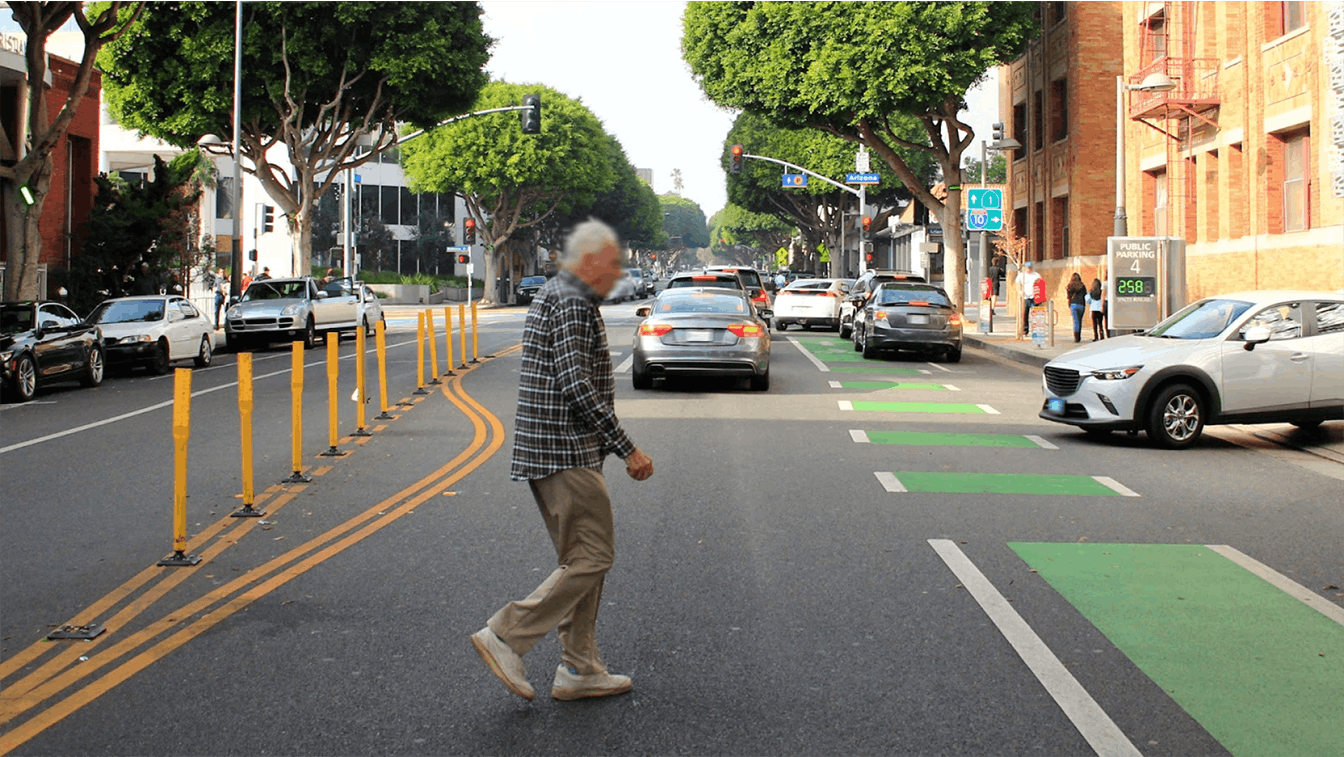
This area tests how well you communicate with other drivers, pedestrians, and cyclists. This skill set includes using turn signals, eye contact, and understanding right-of-way rules. Effective communication is key to preventing misunderstandings and accidents.
7. Parking and Reversing Maneuvers
You’ll be tested on parking and reversing maneuvers, such as parallel parking and backing up safely. These skills are important for safely completing everyday driving tasks in urban and suburban settings.
8. Emergency Procedures
Knowledge of emergency procedures, including how to react in unexpected situations, is sometimes tested. Being prepared for emergencies is crucial for your and others’ safety.
Taking the Road Test
Where to Take the Test
The driving test starts at the DMV office. Make sure to arrive in advance so you can clear all the necessary paperwork before your test begins.
What to Expect During the Vehicle Inspection
Before the road test, a driving instructor can inspect the vehicle to ensure it meets all safety and operational standards.

Which Route Will You Have to Drive?
The locations are different for each city in each state. The road test is supposed to test you on real driving situations so you will drive in traffic situations, like highways, city centers, intersections with traffic lights, and more.
The routes also change from time to time. If the DMV office kept using the same routes for each applicant, new drivers would practice those routes until perfected.
How Long Does the Test Usually Take?

The actual on-road driving part of the road test takes 25-30 minutes. If you pass the test, you will need an additional half-hour, during which the DMV can take your picture, process your paperwork, and issue a temporary license.
As you should arrive at least 15-20 minutes before and allow for a half-hour after, you can expect the entire process to take roughly 90 minutes.
Road Exam Point System
An examiner uses a point system that assigns points for each error made during the test.
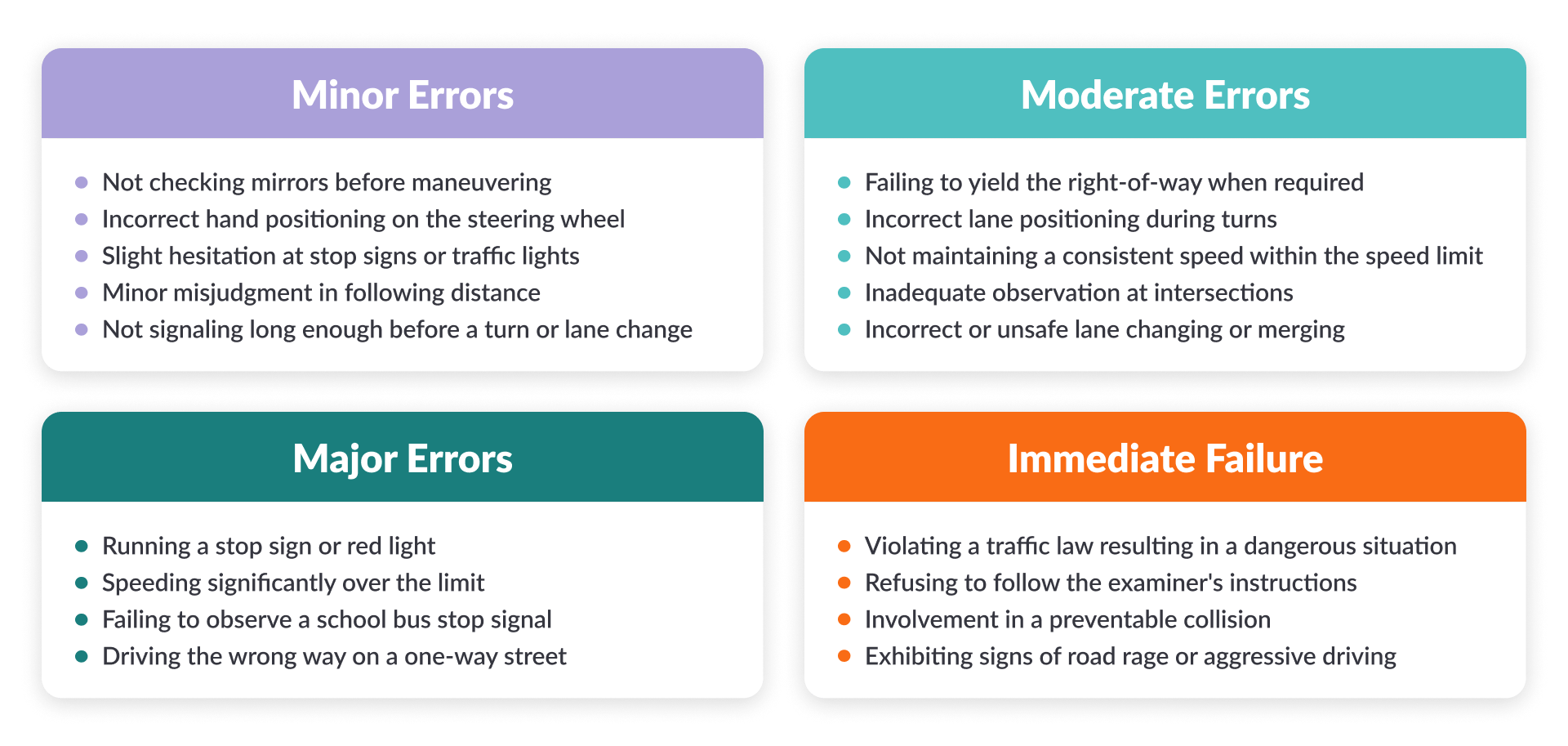
After the Test: Understanding Your Results
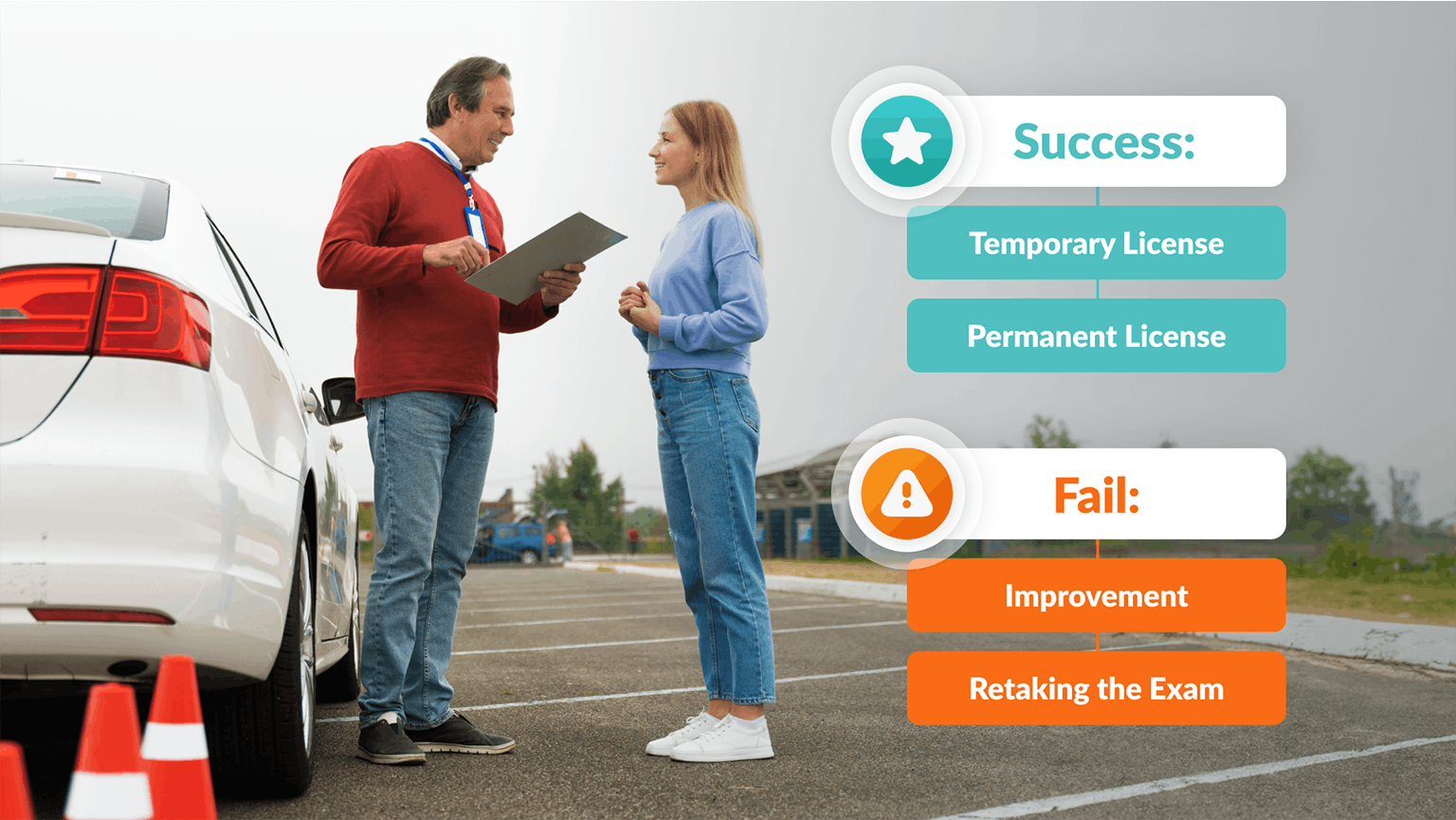
What Happens if You Pass the Road Test?
You will get a form from your driving examiner stating that you passed and should be issued a driver’s license/provisional license. Bring it inside the DMV so they can enter the passing score into their system and issue a temporary license.
The temporary license is valid as proof until the state has time to mail your permanent license by post, which usually takes 30 days maximum. You’ll have to submit additional paperwork, pay the fees, and have your picture taken.
Do You Ever Have to Retake the Road Test After You’ve Passed It?
Yes, it’s possible. You may have to retake both the permit and road test if you let the driver’s license expire for a long time or when it’s suspended or revoked. Some states also require drivers to retake the driving test for specific medical reasons or when a senior citizen reaches a certain age.
What Happens if You Fail the DMV Driving Test?
You will have to redo it another time. In many states, you must wait a few days and up to a week before redoing the road exam. But keep in mind that failing means that you need more practice. Ask your examiner about your current level and what you need to improve.
Our behind-the-wheel online course is designed to give you the essential skills and confidence you need to pass your road test. With professional driving lessons, you’ll focus on the key areas that examiners assess. You’ll also get insider tips from experienced instructors on what to expect and how to avoid common mistakes. Our easy-to-follow video guides, parent training resources for at-home practice, and immersive virtual driving simulations will help you build real-world skills quickly.
7 Tips to Impress Your Examiner

- Pre-Test Vehicle Check: Start with a thorough vehicle inspection. Show that you understand the importance of a well-maintained vehicle for safety.
- Professional Attitude: Greet your examiner politely and listen carefully to their instructions. A respectful and professional demeanor goes a long way.
- Situational Awareness: Constantly scan your surroundings. This includes checking mirrors frequently and being aware of other vehicles, pedestrians, and potential hazards.
- Calm Response to Mistakes: If you make a minor error, don’t panic. Show that you can recover and proceed with caution, a key aspect of safe driving.
- Asking for Clarification: If you’re unsure about an instruction, don’t hesitate to politely ask for clarification. It shows your commitment to doing things correctly.
- Defensive Driving Techniques: Demonstrate your ability to anticipate and safely navigate around potential risks on the road.
- Posture and Ergonomics: Maintain a good driving posture, with hands correctly placed on the steering wheel. It shows attentiveness and control.
Read this guide to unlock more useful tips for successful driving test passing.

Avoid beginner mistakes with expert advice
Build road test confidence and reduce anxiety
Make at-home lessons a success with our parent guide
Recommended articles
Ace your DMV test, guaranteed
Want to Be the Top School in Your Area?
- Simple & automated admin
- More time for teaching
- #1 learning materials for students


